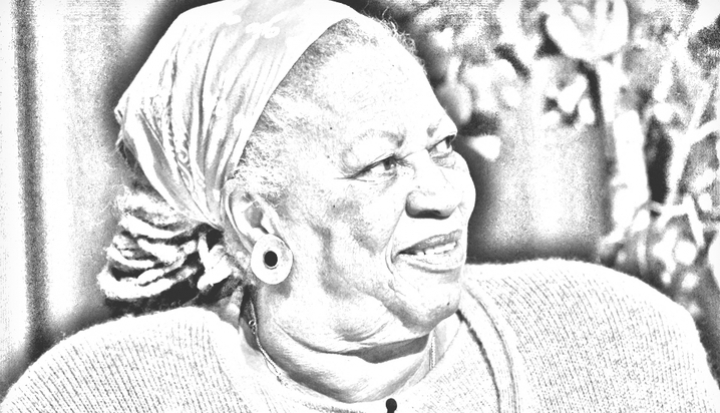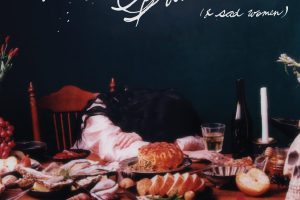In 1943, 12-year-old Chloe Wolford, who had grown up in her mother’s AME church, converted to Catholicism and took St. Anthony of Padua as her confirmation name. Family members shortened Anthony to Toni, and after a name change via marriage, 11 novels, a Pulitzer and a Nobel Prize, Toni Morrison became America’s best-known living Catholic writer.
The final statement might be true but for the fact that many readers are unaware that Morrison is Catholic. Like many contemporary writers, however, her daily relationship with Catholicism is complicated. In 2005, she told Carolyn Denard that while she was writing her novel Paradise, which is about the murder of four women living in an abandoned convent, that “what saved me was . . . knowing that I was going to take religion seriously, I mean belief.” Since then, however, Morrison has moved into a more ambiguous relationship with religion, partly due to shifting American attitudes about it.
In an onstage conversation with author and activist Angela Davis in 2014, Morrison noted that part of her struggle as a Catholic is with the portrayal of goodness or “the reach for moral clarity” as “weak or confined to the scholastic confining world of very religious people, evangelical people.” She added that this conflicted view of goodness runs through the Catholic church as well. In 2018, she told Terri Gross of Fresh Air that her current version of Catholicism is “not a structured one” but that she might “easily be seduced back to church because I like this controversy as well as the beauty of this particular Pope Francis.”
Morrison’s work often portrays what might be called religious themes: revenge, catharsis, redemption. And there is a level of spiritual struggle present in many of her characters. But is she explicitly a Catholic writer? That depends on how one defines that term.
In past decades, when urban enclaves of Catholicism were more visible and when Southern Catholic writers were able to claim a kind of “otherness” on the basis of their religion alone, the lines between Catholic and non-Catholic writers were perhaps more easily drawn. Today, particularly for women writers in the post-feminist era, Catholicism can become more of a delicate shading that runs throughout their work or a point of negotiation in the search for an identity. Like Morrison, many contemporary female Catholic writers are non-practicing Catholics who still delve into religious themes. Or they may be practicing but their relationships with the church involve making a personal and often seemingly irrational and countercultural choice.
Fanny Howe, born in 1940, is not as well known as Morrison, but she is revered as an important voice in experimental poetry and fiction. She received the Poetry Foundation’s Ruth Lily Prize in 2009, awarded to poets whose work warrants “extraordinary recognition.” She has additionally written essays, and in “Footsteps Over Ground” delineates some of what keeps her attracted to Catholicism—a religion she converted to after a divorce.
Howe describes her conversion as a marriage: “In the end a matter of habit and perseverance.” Being Catholic, she writes, “you find yourself constantly arguing with texts, testing them, and feeling indignation against dogma, dull vocabulary, hierarchies, moralizing and patronizing vocabulary. You are critical.” But Catholicism, for Howe, is also redemptive. In an interview with Bomb magazine, she stated, “I don’t agree with many of the teachings. But this is the interesting part of being Catholic: The heresy that comes along with it. Indistinguishable from the rites is the rage, the arguing, the rebelling, the mind on alert. I like to be on alert.”
Howe, who at one point was a single mother on food stamps as well as a civil rights activist, also acknowledges that “the church has done tons of practical good for the poor, has managed to accept the maddest among us, [and] has a huge margin for visions.” She adds that in Catholic churches, “there is generally room for everyone. There are no ‘others,’ and there is art, poetry, and music.” Howe’s 2003 poem “Catholic” reflects her idiosyncratic and mystical theology:
The churn of creation is a constant upward and downward action;
simultaneous, eternal. If you keep thinking there is only an ahead
and a behind, you are missing the side-to-side which gives evidence
to the lie that you are moving progressively.
If everything is moving at the same time, nothing is moving at all.
Time is more like a failed resurrection than a measure of passage
Like Howe and Morrison, Seattle based writer Rebecca Brown is also a convert, and the author of 12 novels and books of essays. Perhaps her best known work is her 1995 novel The Gifts of the Body, told from the point of view of a health worker in the early days of AIDS. The book won a Lambda award for LGBT literature, and her subsequent writing has often delved into issues of the body, illness, health, and sexuality.
Brown was received into the Catholic Church in 2012. In an interview with Moss magazine in 2015, she reflected that there had always been “a real sense of dark and light” in her writing. “There’s a real sense of someone dying, and then getting to live again,” she says. Prior to becoming Catholic, because of the sex abuse scandal and the church’s historical treatment of women, Brown had a sense of Catholicism as “the worst.” But “something drew me—and keeps me drawn to it. Some longing, hunger, draw, whatever, to the mystery of incarnation, redemption, mercy,” she says. She adds, as many Catholics would, that “I can’t explain or justify it.”
As an out lesbian, Brown would seem to occupy a marginalized place in the church, but, as she told Fact/Simile magazine in 2012, her Catholicism, like much of her writing, is embodied. “I’m drawn to passion and to the elemental physicality of it—the rituals of standing, kneeling, sitting, the laying on of hands, the bending of the head in prayer, the baptism by water, making the sign of the cross, the Sacraments as signs of divine presence,” she says.
In her most recent book of essays, American Romances, Brown’s essay “Priests” describes childhood reenactments of communion using Necco wafers. Her essay “Extreme Reading” has multiple echoes to eucharistic theology and continues on the theme of embodiment: “You eat some things because they’re good for you, but there are only so many hours in a day, so many days in a life, so you also consume other things solely because you want to, because you have some craving or urge or longing that only this particular thing can fulfill.”
In 2013, Brown wrote an essay for The Stranger about her hopes for Pope Francis as a “super-feminist, gay, lefty Catholic.” A friend’s question about what kind of Catholic she wanted to be helped Brown understand that there was no one such thing as “a” Catholic. “There were,” she writes, “as there are in most large groups of people, clueless, terrified fundamentalists, but there are also struggling, hopeful, trying-to-be-decent slobs like me.” And as she parsed the complexities of Pope Francis’ journey and his attitudes toward LGBT people, she also came to understand that “Jesus didn’t come here to condemn us human lumps; he came to show us mercy and forgiveness and the goodness of the just and loving heart. He came to show there can be life even after you feel like you’ve been dead, and that even after someone’s been horrible or had horrible things done to them, they can have another chance.”
Brown, Morrison, and Howe are all risk takers. They write books that challenge readers intellectually and emotionally, that center marginalized characters—women, single mothers, people of color, and LGBT people. The Catholicism that runs through their work is one of deep empathy for the struggle of others, of ritual, and of redemption. But it is countercultural in the manner of Dorothy Day or mystics like Hildegard and Julian of Norwich: It pushes back against the dominant structures of greed, the refutation of mystery, and the insistence that being Catholic simply means following a set of rules. For all three of these writers, Catholicism is an intellectual negotiation as much as it is a spiritual one. It is, in many ways, the Catholicism of our time: a faith of heart and mind, but also of gut instinct.














Add comment